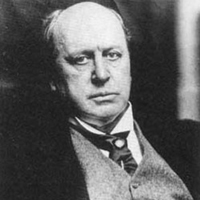The Ambassadors by Henry James: Summary
Henry James includes so many scenic episodes in his novel The Ambassadors. The chronological development of the holistic plot structure includes so many scenic episodes in the novel. Out of the twelve sections of the books almost every section includes scenic episodes. In another word the whole novel lies in an episodic manner.

Henry James (1843-1916)
But one of the interesting aspects of the novel is how the episodes take place rather than what happens in any events. The novel from beginning to the end includes a different number of episodes.
Mr. Lambert Strether was engaged to marry Mrs. Newsome, a widow. Mrs. Newsome had a son Chad, whom she wanted to return home from Paris and take over the family business in Woollett. She was especially concerned for his involvement in French woman. In her anxiety, she asked Strether to go to Paris and persuade her son to return to the respectable life she had planned for him.
Lambert Strether, from Woollett, has come to Europe. Chad has been in Paris for a long time and his mother Mrs. Newsome is worried that Chad will ever return home or not. Despite the assistance of his old friend, Waymarsh, and his new friend, Maria Gostery, Strether is unable to fulfill this task. He is Mrs. Newsome's "ambassador", sent to Paris to protect her interests. Strether arrives in Paris and his trip becomes a return to his own youth.
He enjoys spending time with Chad's young friends, Miss Barrage and Little John Bilhan. Strether is charmed by the Countess, Madame de Vionnet a married woman with whom Chad has begun a relationship. Quite impressed by the Countess, Strether agrees to help her as well- though he does not know how he will be able to appease both Mrs. Newsome and Countess. From the very beginning, Strether's plan is doomed to fail. He hopes to convince Mrs. Newsome that the countless has been a positive influenced on Chad and that Chad has changed for the better. Waymarsh gives Strether very sound advice: Strether should either follow his directions from Mrs. Newsome, or give up altogether. Strether rejects this advice and tries to find the compromise between two conflicting positions. Just when Chad seems willing to go back home to Woollett, it is Strether who convinces the young man to stay in Paris for a little while longer.
Strether's fate quickly runs downhill. Mrs. Newsome sends her daughter, Sarah Pocock (Chad's sister) to bring Chad home. Sarah arrives with her husband, Jim Pocock, and her sister in law, Mamie Pocock. It is suggested that Chad will return home to marry Mamie Pocock and continue in the family business: advertising. Unlike Strether, Sarah Pocock is not amused by the Society and its trappings, nor is she impressed with the Countess, nor is she inspired by the trappings, nor is she impressed with the Countess, nor is she inspired by the architecture and atmosphere of Paris. Sarah intends to do her job and she does it quickly. It does not take very long for Chad to get himself ready to leave Paris. His condition to Sarah is that he will agree to return home if Strether gives him the word. Sarah turns to Strether, considering that the task has been completed- for how could Strether refuse? This is, however, exactly what Strether does.
Fearing that Chad will return and live a miserable life in business, Strether looks at his own miserable life and is unable to condemn Chad to a similar fate. Strether knows that Chad will return home, regardless of what he says. Still, Strether does not want the blot on his conscience. This move is costly for Strether: he will likely lose his job with the Newsome. The possibility of his marriage with Mrs. Newsome is nullified as well. In sum, Strether a man with very little money has lost the opportunity to get a good deal more. At the end of the novel, the only solace that he is in knowing that he has been true to his ideals and has gained nothing for himself. In this way all these above mentioned episodes play a vital role to give the holistic formulation of his novel regarding its overall structure. The most significant action of the novel occurs in the series of scenes.
